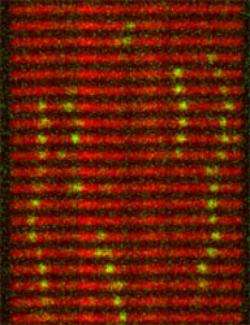One-dimensional Diffusion Accelerates Molecular Motors

Max Planck scientists have identified a new strategy which motor proteins use to move. The research was carried out by Prof. Jonathon Howard and Stefan Diez at the Max Planck Institute of Molecular Cell Biology and Genetics in Dresden. The motor protein MCAK (Mitotic Centromere Associated Kinesin) goes into action at the end of microtubules where it disassembles them.
This is in contrast to most other motor proteins, which transport materials over long distances along microtubules. The researchers were able to show that the protein reaches the position via a random, one-dimensional diffusion movement along the microtubule, until it locks into place at its end (Nature, May 4, 2006). This discovery is important for understanding cellular life processes like cell division and nerve cell growth.
When cells divide, they build a giant apparatus - the so called the "mitotic spindle". It is made up of microtubules; which are tiny protein polymers that can be built up and torn down like scaffolding. They also make up "tracks", along which motor proteins pull the halves of chromosomes into existing daughter cells. Until now, scientists have not known how the length of microtubule gets regulated, nor how the proteins reach the end of the microtubules to be regulated.
The Max Planck researchers looked at the example of the protein MCAK, and how it locates microtubule ends. Howard and his colleagues followed single MCAK molecules under the microscope and could see that MCAK docks randomly anywhere on a microtubule, and then slides around on its surface.
This "random" strategy is surprisingly efficient and successful. It allows MCAK to localize microtubule ends very quickly. Howard says, "when it gets there, MCAK eats like a Pacman into the end of the microtubule." The chromosome halves follow this movement and are this way accurately distributed on the daughter cells.
Source: Max-Planck-Gesellschaft


















